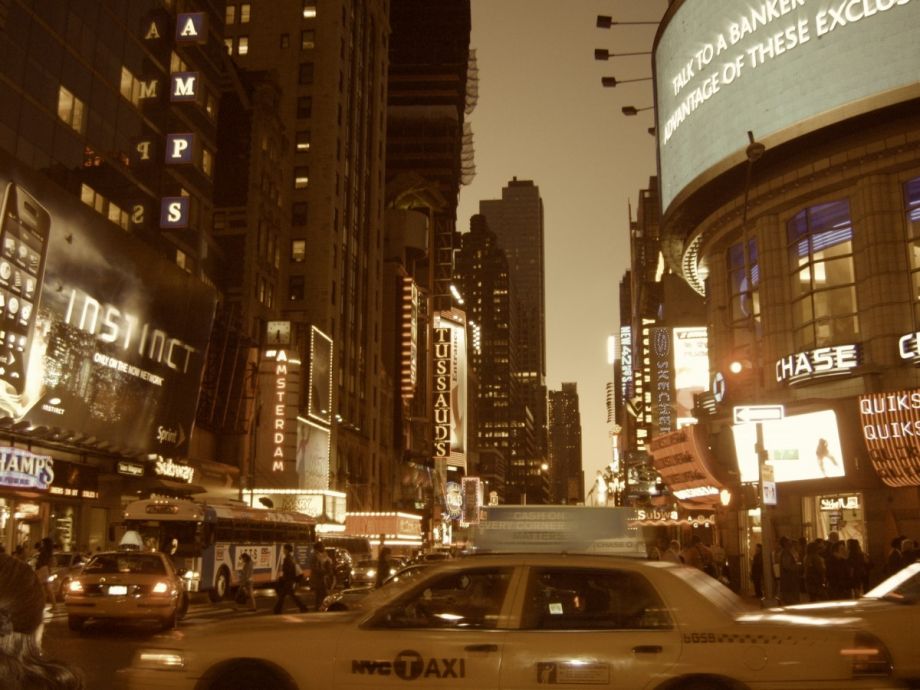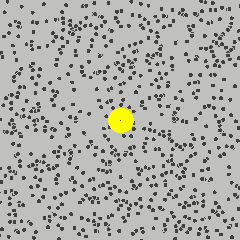How a City’s Collective Memory May Predict the Future

(Photo by Kamel15)
Imagine, says Alberto Hernando de Castro, you are moving to a city. Maybe it’s New York, where hundreds of thousands of people move in (and move out) every year. You might be moving to find or follow love, to take a job that exists nowhere else or to fulfill a desire — maybe whim, maybe a long-held dream — to be in this particular place.
“There is a good reason for every one, for every single person,” Hernando says. “A big decision for them, apparently small for the city. Most of them, they never meet with each other and probably they never will. But all these moves are correlated, and also with those that happened 20 years ago.”
This is one of the key findings of his latest study: that U.S. cities have a “memory” that goes back 25 years — that a city’s population dynamics in a particular year have some significant relationship to the population dynamics of every preceding year, going back half a century. In other words, it looks like there’s some underlying logic or rule connecting each individual in a city to (seemingly unrelated) movements of the greater population.

(Credit: Lookang)
Hernando is a theoretical physicist, working to seek out laws, analogous to the laws of physics, that describe the workings of cities — a “thermodynamics of population flows,” for instance. It’s heady in the abstract. But look at the gif of Brownian motion (right), the random movement of particles in a fluid.
It’s not a such a big stretch from that to people moving in Times Square.
“It is hard to believe that all these individual decisions have something in common,” Hernando says. But that randomness of individual movement isn’t the whole story here. “The sum of all our decisions, of all our moves, contribute to the entity called ‘the city,’” he says.
Hernando’s work builds on the understanding that started developing earlier in the 20th century, that cities do behave in some regular ways. The relative size of cities in a given country, for instance, fits Zipf’s law. This statistical principle describes relative frequencies within a large set of data: It was first connected to the way we use words — “the,” the most common word, is used twice as frequently as “of,” the next most commonly used word. With cities, you can halve the population of a country’s largest city and get roughly the population of the second most populous city. The third most populous city has about a third of the population of the first. (New York, 8.4 million; Los Angeles, 3.8 million; Chicago, 2.7 million.)
But Hernando is interested in dynamics: How do cities grow? How do they interact? Or, another way of putting that: How do cities move in time? In space?
In a paper published in 2013, Hernando and his colleagues tried to answer these questions using a large set of data describing the population of Spanish cities over decades. They found that these cities’ memories went back 15 years, and cities influenced each others’ population dynamics if they were within 80 km (about 50 miles) of each other. This new study looks at the same questions using U.S. census data stretching from 1830 to 2000.
The study’s finding about distance — that U.S. cities within 200 km (about 125 miles) of each other have an influence on how their respective populations grow and shrink is relatively straightforward. But it’s also pretty remarkable, if you look at particular examples. Take New York, for example: This rule puts Hartford, Philadelphia and Wilmington — but not Boston or D.C. — within New York’s orbit. Boston’s connected to Portland, Maine, Manchester, New Hampshire, and Providence. D.C.‘s in a relationship with Baltimore and Richmond, with Philly on the very edge. In the South, Atlanta gets Athens, Columbus and Chattanooga. In Cleveland’s radius: Detroit, Ann Arbor, Toledo, Pittsburgh. Chicago: Madison, Milwaukee, Kalamazoo and Bloomington. Los Angeles: Santa Barbara, San Diego. In every case, the statistically derived radius manages to connect cities that make intuitive sense together.
The finding about time is a little bit more complicated to understand. What does it mean that a city has a “memory” that goes back only 25 years? One way to think about it is that it’s reminiscent of how we grow as people — how long can a person’s current behavior be connected to the choices and experiences she made in years past? Last year’s behaviors surely have more influence than five years’ past, or 10, or 20. And at some point, our past self becomes disconnected to our present; the 4-year-old has only a tenuous connect to the 40-year-old.
There’s another complicating factor: Hernando and his colleagues also argue that cities can suffer from a “post-traumatic amnesia.” In the Census data, they found that there were occasional breaks in the connections between present and past — points at which the correlation dropped to zero or became negative. They connected those points to two major historical events — the Civil War and the stock market crash, essentially by looking at the points where these breaks originated and considering what might have caused them. It’s a little bit of a leap in logic, but, to follow the analogy of people to cities — don’t we say, of the soldier who comes home from war or the victim of a terrible accident, that it’s “like she’s a different person”? If personal traumas can wipe a person of her past, maybe historical events can do the same to cities.
This might seem a little far from the practicalities of city building, but it’s in service of a concrete goal: These researchers want to find a set of equations that could forecast demographic and economic trends that could be used all over the world. “We want to do it with a mathematical framework, and thus be able to do predictions and simulations, as we do now in physics and other sciences,” Hernando says. “Our aim is to develop a simulation tool were any policy of potential economic and social plan can be tested in a computer before applying it in real life.”
What’s clear from the work so far, he says, is that “there is no such thing as ‘short term’ for demographics.” If a policy effects change, the city could be living with that alteration for decades, long after the lawmakers and their staffs have moved on. Individuals might forget the source of the change.
While the implications of this work for free will once troubled Hernando, he’s since reassured himself that any one person’s behavior is essentially impossible to predict. But predicting what one million people will do is easier. Whatever individuals did or decided, the city as a whole bears some lasting mark of it.
The Science of Cities column is made possible with the support of the John D. and Catherine T. MacArthur Foundation.
Sarah Laskow is a reporter and editor in New York who writes about the environment, energy, cities, food and much more.

No comments:
Post a Comment
Please leave a comment-- or suggestions, particularly of topics and places you'd like to see covered